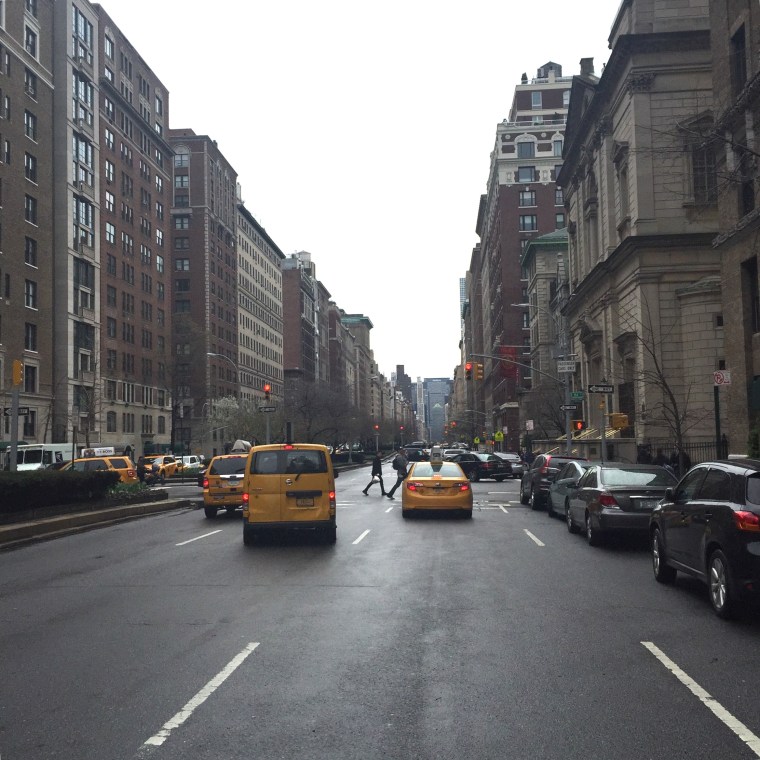
Recently I was fortunate enough to spend a few days each in Paris and London before returning to my beloved New York City (see above, the magnificent Manhattan grid, personified here on majestic Park Avenue). I was able to take several dérives (unplanned walks in an urban environment) as well as talk with New Yorkers currently living in each city. This experience led me to think about the similarities and differences of each of these great cities, and how living in each is unique. In addition, because I am a real estate agent in New York City, I will share what I learned from meeting with colleagues in the other two cities and compare all three markets.

My first stop was Paris. It’s hard to find someone not charmed by this extremely elegant city. Oscar Wilde once quipped, “When good Americans die, they go to Paris.” Thomas Jefferson, after his years as Ambassador to France, noted that “a walk about Paris will provide lessons in history, beauty, and the point of Life.” I don’t know if I would agree to that extent (perhaps I missed my lesson on the point of life?) but I do agree with the filmmaker Wes Anderson, who said “Paris is a place where, for me, just walking down a street that I’ve never been down before is like going to a movie or something. Just wandering the city is entertainment.” I noted in a previous blog post about Dumbo in Brooklyn that I felt you couldn’t take a bad photo in Paris (and felt the same about Dumbo), because every new vista seemed to provide a perfectly framed gorgeous scene.

Central Paris looks the way it does mainly due to the vast restructuring under the time of President Louis-Napoléon Bonaparte, the nephew of the more famous Napoléon, and the urban planner Georges Eugène Haussmann. Medieval Paris through the nineteenth century was filthy and unsanitary, with reeking sewers (Victor Hugo described it well in Les Misérables) and gorgeous buildings like the Louvre hidden behind crumbling tenements. Haussmann appropriated land and destroyed what he needed to in order to create a gigantic cross through the heart of the city made up from east to west along the Rue de Rivoli and Rue Saint-Antoine, and north-south along two new Boulevards, Strasbourg and Sébastopol. In later renovations, more boulevards were created, generally on the diagonal rather than a grid.
The unusual aspect of all of this is that so much work was done within a relatively short period of time in the mid-nineteenth century. This is the more significant factor to the consistency of the look of Paris compared to most other cities.
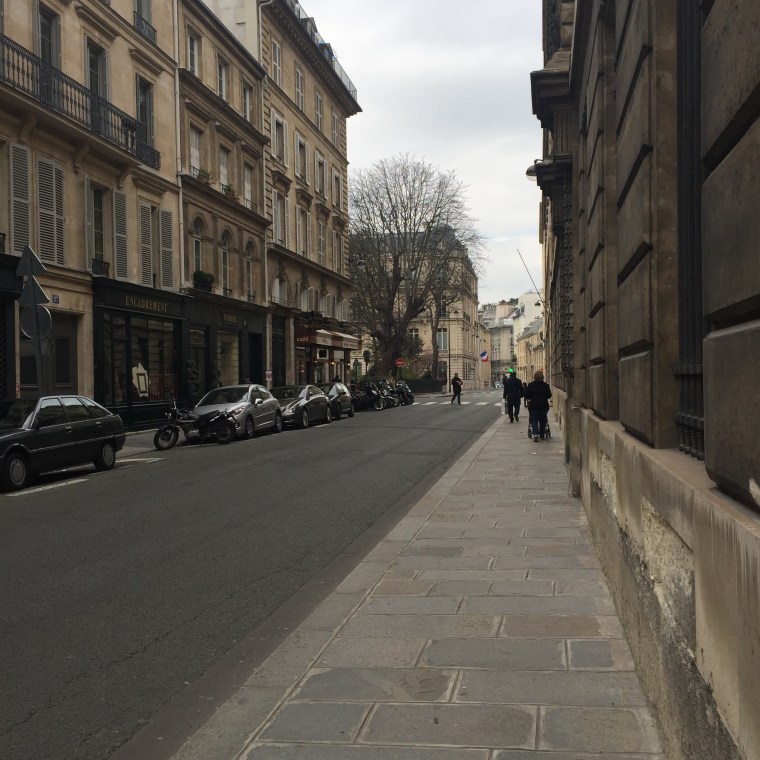
I asked a native New Yorker who now lives in Paris about how the layout of the two cities affects living there. She pointed out that, with most of Manhattan a grid, people refer to an address as an intersection of an Avenue and a Street. For example, if you were meeting someone at Carl Schurz Park in Yorkville you might agree to meet on the corner of East End Avenue and 84th Street. In Paris, a meeting place is more likely to be described as what arrondissement it is in, what metro stop it is near, and then the actual address.
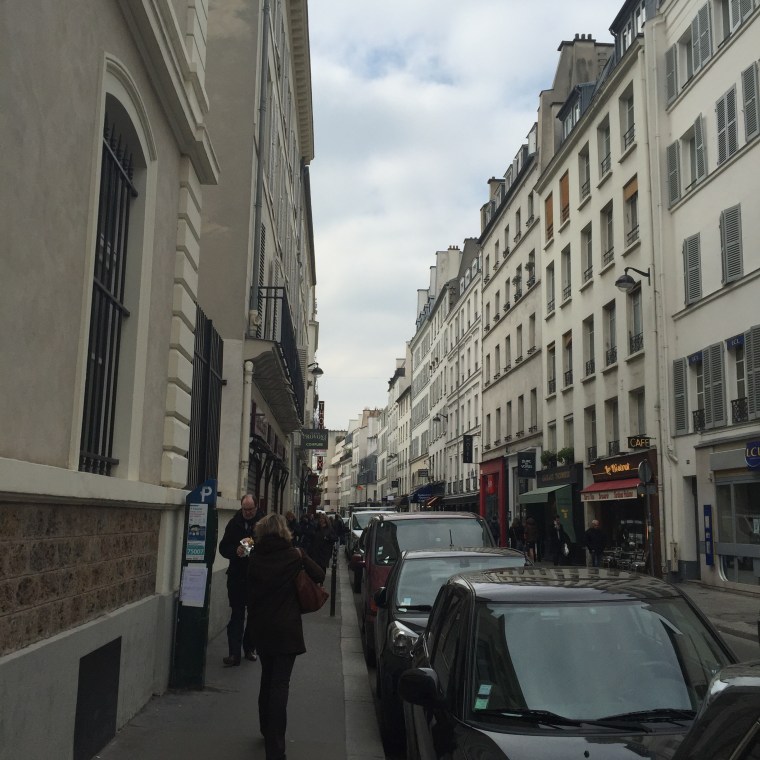
The experience of walking in Paris is very different on the wide boulevards versus the much narrower streets. In addition, the boulevards keep cutting through on the diagonal, creating triangles. New York City has Broadway running on a huge diagonal along the entire length of Manhattan from northwest to southeast, creating such iconic “squares” as Times Square and Herald Square. However, most of Manhattan above 14th Street unfolds as a predictable series of streets intersecting at right angles with avenues.


After a very enjoyable and easy trip on the Eurostar train, my next stop was London.

When looking up quotes to enliven this blog post, I was surprised to find so few really positive quotes about London compared to Paris. For instance, William Butler Yeats commented, “This melancholy London – I sometimes imagine that the souls of the lost are compelled to walk through its streets perpetually. One feels them passing like a whiff of air.” Hmmm. Worse, from G.K. Chesterton: “London is a riddle. Paris is an explanation.” And confusingly, from author Peter Shaffer: “If London is a watercolor, New York is an oil painting.” While I enjoy Paris and of course find it to be beautiful, I love London – second in my heart only to New York City. If only I could write a pithy quotable quote to express this feeling!

Walking across the Millennium Bridge, itself completed and opened in June 2000, you get part of why I love London – the juxtaposition of new and old, with St. Paul’s (completed in 1711) framed by this very modern structure.
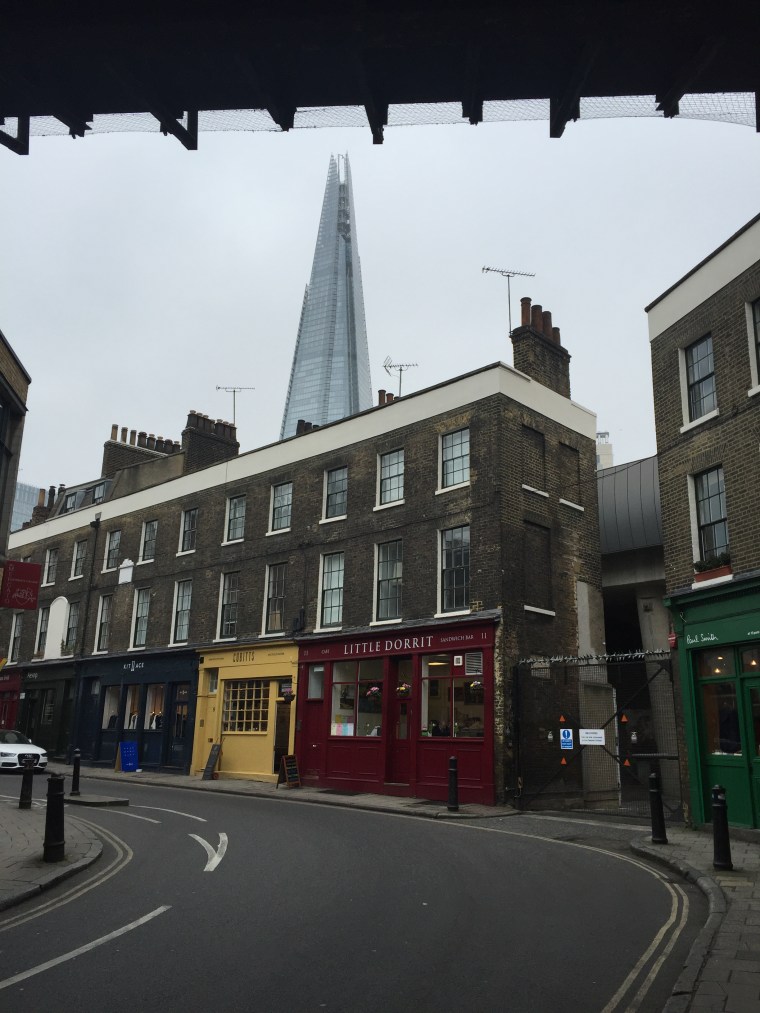
Another example of this is seen here, near Borough Market, with the hyper-modern Shard building visible above these tiny quaint buildings.
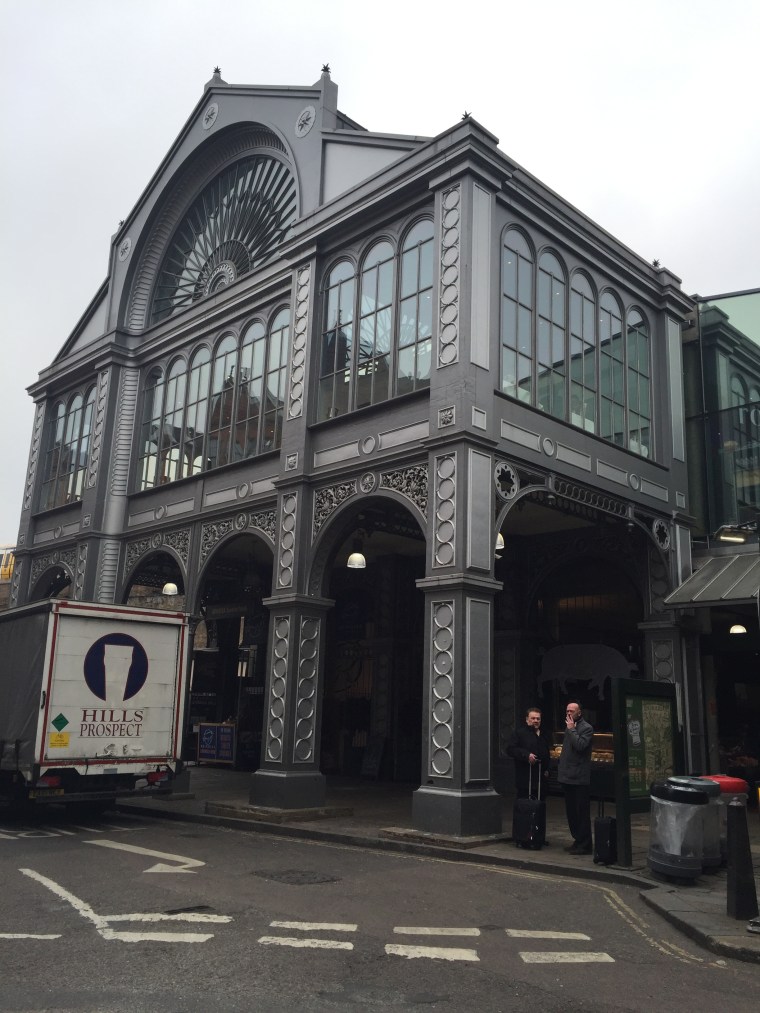
And speaking of Borough Market, it’s one of my favorite places in London. The Southwark neighborhood surrounding it is a delightful jumble of streets.

London is not consistent in architectural style as Paris is – not only are neighborhoods (like the newly fashionable East End, depicted in a mural above) different, even within a neighborhood you can find a variety of styles and eras represented. This is in part due to the Great Fire of 1666, meaning that very little of medieval London still exists (the Tower being a notable exception), and in part due to the bombings during World War II and the rebuilding since then.


Some neighborhoods, like Chelsea (above) and Mayfair (below) do keep more of a consistent architectural style, however.




Walking in London can be confusing, since it is even less of a grid than Paris and certainly much less so than Manhattan above 14th Street. However, this labyrinth of twisting streets and sudden alleyways is what makes taking an unplanned walk (with few time constraints) so rewarding. James Geary, the American journalist, remarked, “London always reminds me of a brain. It is similarly convoluted and circuitous. A lot of cities, especially American ones like New York and Chicago, are laid out in straight lines. Like the circuits on computer chips, there are a lot of right angles in cities like this. But London is a glorious mess. It evolved from a score or so of distinct villages, that merged and meshed as their boundaries enlarged. As a result, London is a labyrinth, full of turnings and twistings just like a brain.” I don’t know that the brain analogy would have ever come to me (and I have a degree in neuroscience!) but I would agree that the twistings and turnings do make it a “glorious mess.” A native New Yorker now living in London pointed out how much larger in area central London is compared to Manhattan, while central Paris is much more compact. Of course the population of London was 8.539 million in 2014, while New York City (all five boroughs) was an equivalent 8.406 million at roughly the same time (Manhattan only 1.626 million, however). Paris, on the other hand, has a population of 2.244 million, a significantly smaller number.
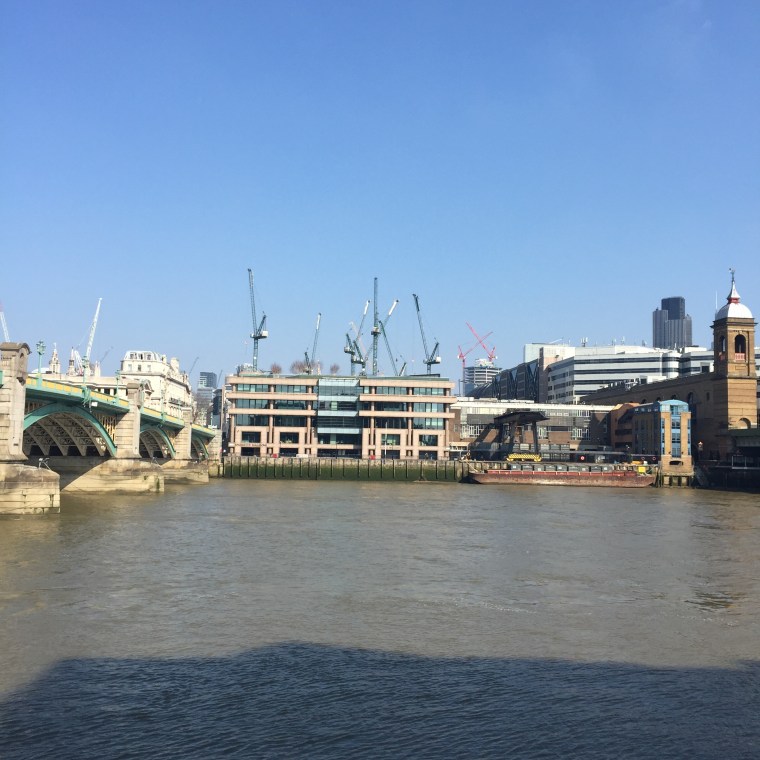
One last comparison between New York City and London. One of my favorite quotes about NYC is from O. Henry, who said (quite a long time ago, I will add), “It’ll be a great place if they ever finish it.” The constant construction and cranes seen in London (above) remind me very much of New York. I love how NYC is constantly changing, and while obviously historic preservation is important, the tearing down and building up of our city is part of what gives it the feeling of always being new, in the process of reinventing itself.
A significant similarity between Paris and London is that they each have rivers running through the heart of the city, with part of the joy of walking there involving crossing bridges to get from one side to the other. In Manhattan, you are surrounded by water, and there are enjoyable strolls both on the East River and the Hudson. You can also walk over the Brooklyn Bridge (see my photo tour of doing that here), highly recommended. However, I would say that the most similar feeling to crossing a bridge in Paris or London is to cross Central Park, not as long as a river but as significant for the large section of Manhattan it divides. The difference in feeling (and strong loyalty it inspires) among east siders and west siders is similar to the change between the north and south bank areas of the Thames, or Rive Gauche versus Rive Droit.
As far as real estate values in these three cities, despite all the recent concern over whether London’s housing prices could continue their meteoric rise despite new concerns over a possible Brexit and the additional tax on luxury properties, London housing prices increased 13.5% in the past year, compared to New York City’s 12% (still a large increase!). There is some indication, however, that the foreign investor is starting to see London as a less advantageous place to buy, since prime real estate in London at the highest price points declined 0.8% in the first three months of 2016. Meanwhile, in Paris, even before the November 2015 terrorist attacks, home values were down 2.8% and projected to fall another 3% in 2015. At this point in 2016, homes in Paris are down 9% from values in 2011.
Most people, of course, live in a particular city because their work brings them there, they have family there, or some other practical reason. Those who can afford to own places in more than one city may choose to do so in part for financial reasons, but often also because the city is an appealing place to visit. New York, London, and Paris all offer so much and uniquely so – although I would argue that they are equally suited for an individual like myself who loves to walk.


